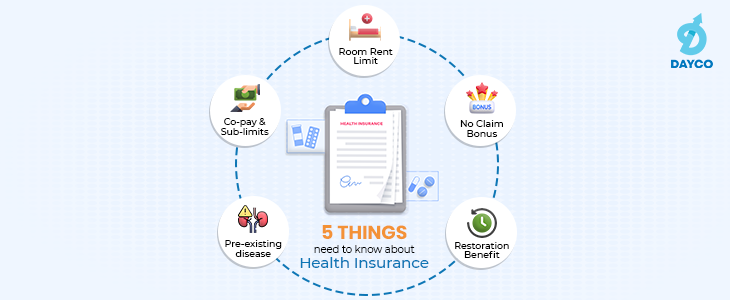There are two mascots in India which are well-recognised, appreciated and a source of great pride.
The Maharajah, was created by Bobby Kooka, the then Commercial Director of Air India, and Umesh Rao, an artist with J. Walter Thompson Limited in 1946 and Air India adopted the Maharajah as its mascot the same year.
In 1966, Sylvester da Cunha, the then Managing Director of the advertising agency Advertising and Sales Promotion (ASP) was hired to design an ad campaign for Amul Butter. Along with his Art Director, Eustace Fernandez they decided to create something that would grab the attention of every housewife in the country.Dr Verghese Kurien, then Chairman of the Gujarat Co-operative Milk Marketing Federation Ltd. (GCMMF) suggested a mischievous little girl as a mascot with two requirements. It had to be easy to draw and memorable as most of the advertising would be outdoor media which required hand painting in those days as the hoardings had to be changed frequently
The Amul girl was created as a response to Amul’s rival brand Polson’s butter-girl and the campaign was designed as a series of hoardings with topical ads, relating to day-to-day issues. The Amul girl is a hand-drawn cartoon of a young Indian girl dressed in a polka dotted frock with blue hair and a half pony tied up. The Amul girl advertising has often been described as one of the best Indian Advertising concepts because of its humour. It earned a Guinness World Record for the longest-running ad campaign in the world and on 17 October 2016, Amul butter girl celebrated 50 years when she first appeared in a topical ad and is another favourite Indian mascot.
The birth of Amul began when milk became a symbol of protest. The farmers of Kiara in Gujarat, who were marginal milk producers were being exploited by traders and agents in small cities. The prices of milk were arbitrarily determined at the time. The government had given Polson an effective monopoly in milk collection from Kaira and its subsequent supply to Mumbai
Angered by the unfair trade practices, the farmers of Kaira approached Sardar Vallabhbhai Patel under the leadership of local farmer leader Tribhuvandas K. Patel. He advised them to get off middlemen and form their own cooperative which would have procurement, processing and marketing under their control.
Sardar Patel then sent his trusted deputy, Mr. Morarji Desai, to Kaira District to organize milk co-operatives – and a milk strike if necessary. Mr. Desai held a meeting in Samarkha village on January 4, 1946. It was decided that milk producer’s co-operative societies should be organized in each village of Kaira District to collect milk from their member-farmers. The Government should undertake to buy milk from the Union. If this wasn’t done, the farmers would refuse to sell milk to any milk contractor in Kaira District. The Government turned down the demand. The milk farmers of the area went on a milk strike refusing to be cowed down by the cartel. The strike lasted for 15 days. After 15 days the Milk Commissioner of Bombay, an Englishman, and his deputy visited Anand, accepted the farmers’ demand, which led to the setting up of the cooperative to collect and process milk.
Milk collection was decentralized, as most producers were marginal farmers who could deliver 1–2 litres of milk per day. Cooperatives were formed for each village. The Kaira District Co-operative Milk Producers Union Ltd (KDCMPUL) began pasteurizing milk in June 1948, for the Bombay Milk scheme. It began with just a handful of farmers in two village dairy co-operative societies and 247 litres of milk per day and today it is renowned as Amul Diary. By the end of 1948, 432 farmers had joined village societies, and the quantity of milk handled by the Union had increased to 5000 litres a day.
In 1954, Kaira District Co-operative Milk Producers’ Union built a plant to convert surplus milk produced in the cold seasons into milk powder and butter, thus enabling the Union to organize more village co-operative societies and to handle more and more milk each year.
The success at Anand soon spread to its neighbourhood in Gujarat. Within a short span, five unions in other districts –Mehsana, Banaskantha, Baroda, Sabarkantha and Surat – were set up, following the approach sometimes described as the Anand pattern. To combine forces and expand the market while saving on advertising and avoid competing against each other, the Gujarat Co-operative Milk Marketing Federation Ltd., an apex marketing body of these district cooperatives, was set up in 1973. The Kaira Union, which had the brand name Amul with it since 1955, transferred it to GCMMF.
Tribhuvandas became the founding Chairman of the organization and led it until his retirement in 70s. He hired Dr. Verghese Kurien in 1949. He convinced Dr. Kurien to stay and help with the mission. Dr. Kurien was initially the General Manager and helped guide the technical and marketing efforts of Amul. Dr. Kurien was the Chairman of Amul briefly after Tribhuvandas Patel died in 1994.
Dr. Kurien, Founder-Chairman of the GCMMF for more than 30 years (1973–2006), is credited with the success of Amul’s marketing.
The GCMMF is the largest food products marketing organisation of India. It is the apex organisation of the dairy cooperatives of Gujarat. It is the exclusive marketing organisation for products under the brand name of Amul and Sagar. Over the last five and a half decades, dairy cooperatives in Gujarat have created an economic network that links more than 31 lakh (3.1 million) village milk products with crores of consumers in India.
The word “Amul” is derived from Sanskrit word ‘Amulya’ which means ‘priceless’ or precious’.Amul has around 2.6 million producer members and the total capacity for handling milk is around 10.16 million liters every day. The brand’s capacity for milk drying is around 594 Mts. each day and its capacity for cattle feed manufacturing is about 2640 Mts. each day.
Amul is also the biggest brand in the pouched milk sector in the world and in India it is the biggest food brand. Amul’s range of products includes milk, ghee, milk powders, curd, beverage, ice cream, paneer, cream, chocolate, cheese, butter, and shrikhand. .
Amul India’s annual (2019-20) business surpassed Rs 36,550 crore in Indian currency. With the tireless efforts of 10,000 employees currently working in Amul India, Amul milk and drink has become a place of fidelity in every family.
If you have a question, share it in the comments below or DM us or call us – +91 9051052222. We’ll be happy to answer it.
– Melvyn Pinto
















